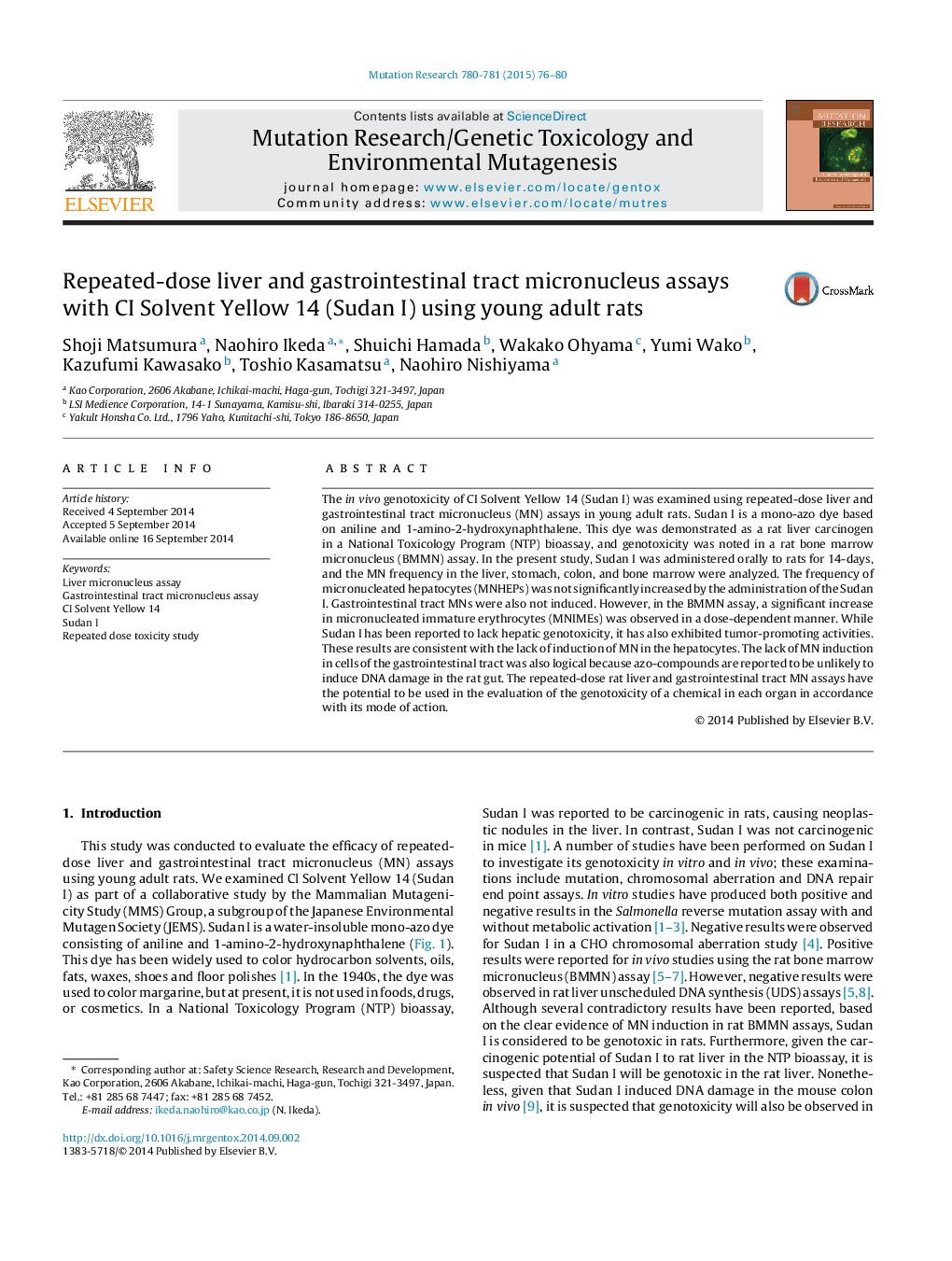| Article ID | Journal | Published Year | Pages | File Type |
|---|---|---|---|---|
| 8456416 | Mutation Research/Genetic Toxicology and Environmental Mutagenesis | 2015 | 5 Pages |
Abstract
The in vivo genotoxicity of CI Solvent Yellow 14 (Sudan I) was examined using repeated-dose liver and gastrointestinal tract micronucleus (MN) assays in young adult rats. Sudan I is a mono-azo dye based on aniline and 1-amino-2-hydroxynaphthalene. This dye was demonstrated as a rat liver carcinogen in a National Toxicology Program (NTP) bioassay, and genotoxicity was noted in a rat bone marrow micronucleus (BMMN) assay. In the present study, Sudan I was administered orally to rats for 14-days, and the MN frequency in the liver, stomach, colon, and bone marrow were analyzed. The frequency of micronucleated hepatocytes (MNHEPs) was not significantly increased by the administration of the Sudan I. Gastrointestinal tract MNs were also not induced. However, in the BMMN assay, a significant increase in micronucleated immature erythrocytes (MNIMEs) was observed in a dose-dependent manner. While Sudan I has been reported to lack hepatic genotoxicity, it has also exhibited tumor-promoting activities. These results are consistent with the lack of induction of MN in the hepatocytes. The lack of MN induction in cells of the gastrointestinal tract was also logical because azo-compounds are reported to be unlikely to induce DNA damage in the rat gut. The repeated-dose rat liver and gastrointestinal tract MN assays have the potential to be used in the evaluation of the genotoxicity of a chemical in each organ in accordance with its mode of action.
Keywords
Related Topics
Life Sciences
Biochemistry, Genetics and Molecular Biology
Cancer Research
Authors
Shoji Matsumura, Naohiro Ikeda, Shuichi Hamada, Wakako Ohyama, Yumi Wako, Kazufumi Kawasako, Toshio Kasamatsu, Naohiro Nishiyama,
